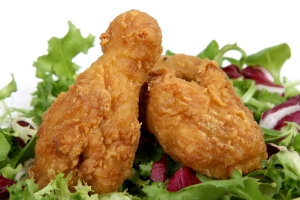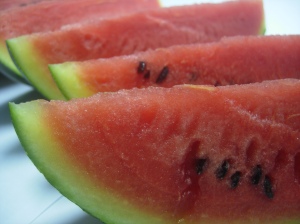I think I have successfully branded myself as “that girl who loves cupcakes.” Okay, so maybe it was as easy as just squealing at the sight and mention of them. It also doesn’t hurt that I tend to bake them for everyone– from my closest friends, to my entire accounting class (yes, that did happen). Anyway, as a result, people associate me with cupcakes. And friends keep sending me texts about cake.
Sometimes this means picture messages of the desserts they’re about to consume and sometimes they’re just alerting me about a new cupcake TV show they’re excited about. My friends and family have also begun to give me really fun gifts like cupcake-shaped stationary, magnets and lip glosses (cupcake shape AND flavor). While I absolutely adore that my name seems to pop into others’ heads upon the mention of cupcakes, I have to wonder how the cupcake came to appear so often in American culture in the first place.
Because I’m sure you’ve noticed. Cupcakes are everywhere in 2010.
The ultra-trend
Sure, we’ve seen food trends before. Certain foods like sweet potato fries and chipotle mayo seem to gain popularity and then proceed to show up on menus and in dishes everywhere. But rarely do popular foods begin appearing places other than on plates.
Cupcakes appear to have grown into something even bigger than just a food trend. Borderlining on a lifestyle. They seem to have sprinkled their sparkly pink magic on America and it’s quite possible they are taking over.
In addition to cupcake boutiques popping up in almost every city (some gaining much fame), bigger businesses such as Cinnabon have begun to get in on the cupcake craze as well. Food trends, as these companies have discovered, definitely lead to profits. Heck, even Taco Bell attempted to join the market.
These cute little things have become such a phenomenon that news organizations are trying to guess what will come next when the cupcake frenzy dies down. Others simply cannot wait until it does.
The power of pastry
Because this is my cupcake post (me– that girl who loves cupcakes!) and I am really reveling in my research process, I have for you a list of cupcake-related items. Just to prove how ubiquitous cupcakes truly are.
- Wall art.
- Many cupcake blogs, including Cupcakes Take the Cake, my favorite– by far the best place for cupcake news and saliva-inducing pictures.
- A shirt that says “Peace Love Cupcakes.”
- Wine glasses.
- A car seat. Yes.
- Instructional signs.
And my favorite:
- A $59.99 child-sized “Cupcake Fairy” Halloween costume. She has a wand, antenna and wings.
I personally believe that cupcakes have a universal power of making people happy. And any food that can produce smiles just by existing is a good thing.






